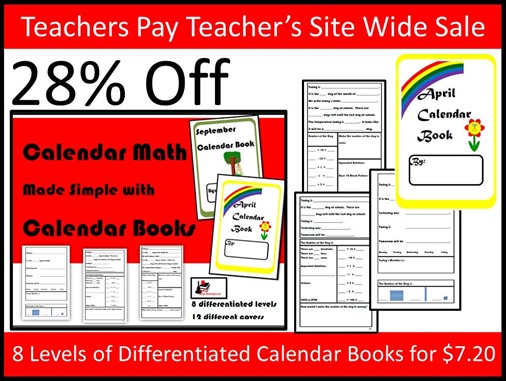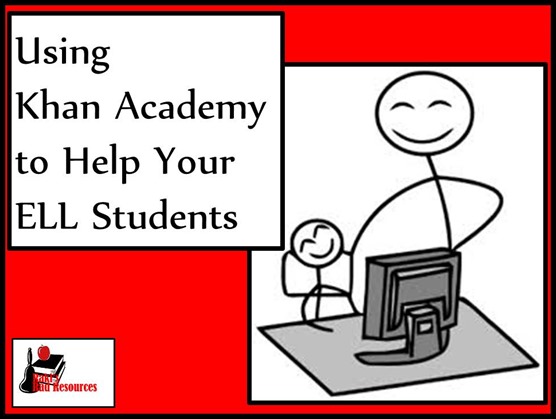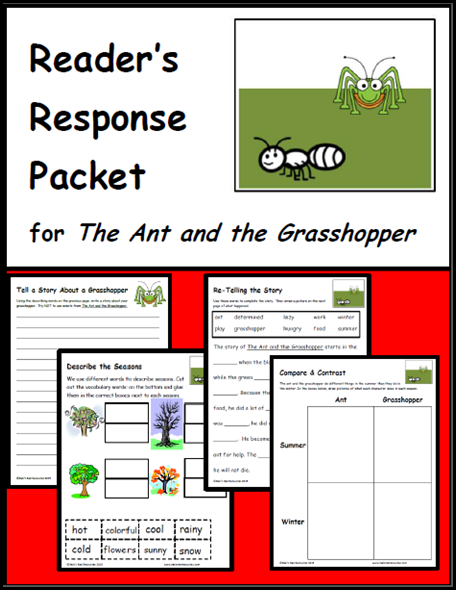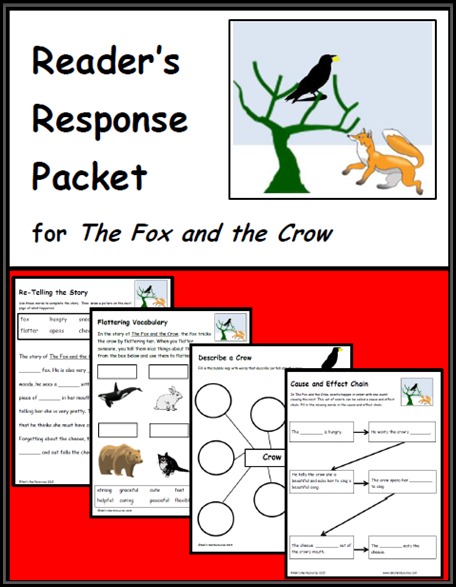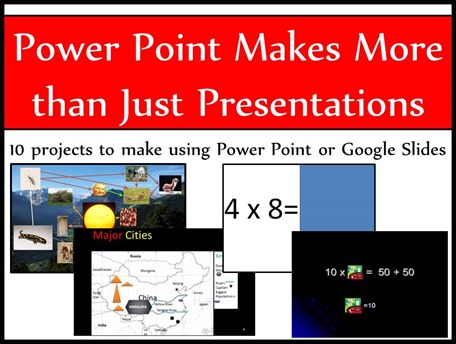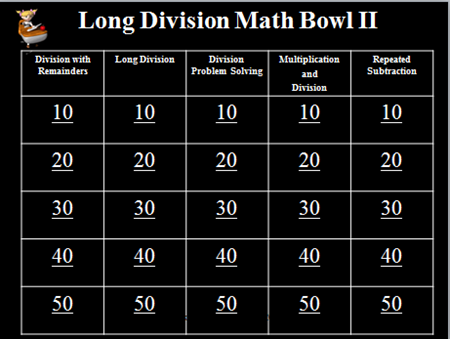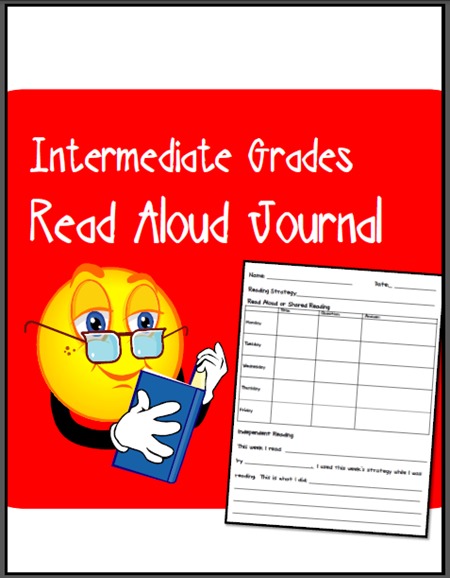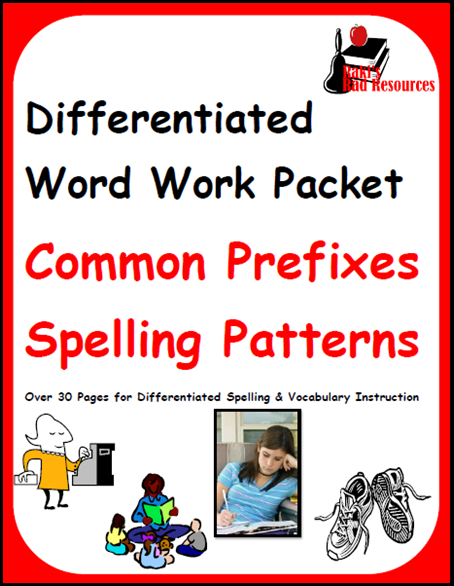Recently I read an article that said that many teachers believe that differentiation is just a catch phrase or a passing phase of education. Many believe that it’s not something that can or will actually get done in the classroom. There are many catch phrases and passing phases in education, but I don’t believe and I sincerely hope that differentiation is not one of these because I have seen it work in my classroom. Differentiation is the best chance to give each child what they need. In a classroom of 20 or 30 kids, differentiation is hard work, and we may not always succeed at differentiation 100% of the time. But I honestly believe that all teachers Kindergarten through 12th grade and beyond should be trying their hardest to differentiate each and every lesson that they teach because each and every student deserves to have an education that meets their needs. No teacher has the ability to sit one on one with each and every student for the entire school day and meet the needs of each student, but we do have the ability to differentiate in many different ways so that we are getting at least closer to our goal. The idea is to walk into each and every lesson saying how can I get very close to meeting the needs of ALL of my students, no matter what their level.
Now I’ve taught in real classrooms with students who are easily 2 grade levels apart or more in ability. I’ve taught in classrooms with high percentages of ESL learners. I’ve taught in classrooms with special education populations. I’ve taught in first grade classrooms, third grade classrooms and mixed age classrooms that had students ranging from 2nd through 5th grade. I even taught technology to K – 5 students. In each and every classroom I’ve ever worked in I have differentiated instruction to the best of my ability. I understand that differentiation can be extremely intimidating, so if you’ve never differentiated your classroom before, choose one section of the day to differentiate at first. This will allow you to put a toe into the differentiation pool without jumping in all together. Then as it becomes more natural for you, let it flow into your other subjects, sections, classes, etc. However, stepping into differentiation, into giving students what they need as an individual learner, will change your teaching and more importantly your students’ learning.
The How
So now that I’ve explained the why, here’s the how. How do I do this? What does it look like? Realistically differentiation can and should take place in many different ways. For me it often looked different depending on the subject. In reading it often looked like guided reading groups, literature circles and student peer reading. In spelling it often looked like a tiered assignment through leveled lists. In math it often looked like ad hoc groups based on a bi-weekly assessment. In science and social students I often used jigsawing, student selected topics and tiered questioning. In technology I use teacher selected student peer tutors. Today I will give you ten differentiation strategies that I have used and that will help you better meet the needs of your students. For each strategy, I will show you how it might look in your classroom, what subjects you can use it with and give you some additional suggestions for implementation. Before you can begin to differentiate, you need to identify the needs of your students through assessments, conferences, observations and just generally getting to know your students.
1.) Tiered or Leveled Assignments
What is it?
Tiered assignments consist of the same general assignment with a variety of levels. You can offer your assignment in as many different ways as you want. I generally try for 3 or 4 levels and put the kids in the closest level to their true level because making the 7 or 8 levels that I truly have is generally not feasible. Tiering means that all of the students in your class are doing the same thing – practicing spelling words, doing puzzles, learning problem solving, etc. However the problem set, the word list, the type of puzzle, or the depth of the topic is what is differentiated.
What subjects is it best for?
Tiering can work in any subject or grade level. It works best with assignments that have a specific process that students should be doing like problem solving or working on a spelling pattern or analyzing informational articles. Tiering works best when the content can be changed easily, without changing the process.
What will it look like?
The teacher will give the same general instructions to everyone. Then students will receive different materials. These materials can be completed individually, with a partner, or in small groups, depending on what you as a teacher want. If students are to work with others, be sure that the students know who else has the same materials as they do. This might mean that students with the same materials work in the same area of the classroom or it might mean that their materials are color coded so that they can see who has the same material as they do. For a look at a tiered assignment I did with my class, check out the blog post - Keeping them Moving while Learning; Finding Angles on the Playground
What resources might help me with this?
Calendar books allow students to have the same cover with different work pages. Students all work on their calendar books for twenty minutes a day. They all work on math concepts, but the actual math concepts that they work on can be differentiated to eight different levels.
Spelling and vocabulary packets allow students to all work on the same spelling pattern each week with four different levels of word lists. The activities for each of the levels are similar, but progressively more challenging.
-----------------------------------------------------------------------------------------------------------------------------------------
2.) Semi-Permanent Grouping
What is it?
Groups that can work together for long periods of time are semi-permanent groupings. Students might work in these groups with you or by themselves. Groups can consist of students who are all the same level so that they can work on the same skills together. Or groups can consist of low, middle and high level students show that they can work together on a problem with some students guiding others through the activity. These groups are labeled as semi-permanent because they can and should change as the need arises, either for academic or social reasons. Teachers should track how groups are doing together and change groups accordingly.
What subjects is it best for?
Guided reading groups are of course the first thing that comes to mind when we think of semi-permanent grouping, and literature circles can also be classified this way as well. However, semi-permanent groups can be used any time students will be working on the same or similar types of activities over a long period of time. Groups that are done homogenously with time to meet with the teacher are great for specific skills that take a long time to build like reading comprehension, the writing process, math problem solving, the scientific method and using geography.
What will it look like?
The entire class can be broken into semi-permanent groups that are all meeting at the same time. Or one group may be meeting, either on their own or with a teacher, while the other students are working on a completely different assignment. For example, I often pulled my guided reading groups while the other students worked at their own pace through a list of assignments. Students who were called to my table left what they were doing, came to me and worked until we were done and then returned and picked up where they left off once we were finished. Other teachers like for students to move with their semi-permanent groups through a series of activities like centers or workstations, switching at assigned times. I explain this process more in my blog post – I Don’t Do Center Rotations and Here’s Why.
What resources might help me with this?
Students in semi-permanent groups can work together on any variety of novel studies. All of the students in your class can be working on novel studies at the same time if you wish, but each semi-permanent group can work on a different novel that is appropriate to their reading level or interest.
Students can work in semi-permanent groups to complete internet scavenger hunts to work on internet research as well as science and social studies topics.
-----------------------------------------------------------------------------------------------------------------------------------------
3.) Ad Hoc Groupings
What is it?
Ad hoc groups work together for short period of times. Students might work in these groups with you or by themselves. These groups generally consist of students who are all the same level so that they can work on the same skills together. Every once in awhile you might want groups can consist of low, middle and high level students show that they can work together on a problem with some students guiding other students. These groups are ad hoc because they change quickly and may only meet for one class period or less. Teachers can remove students from an ad hoc group as soon as the students have mastered the concept or completed the activity.
What subjects is it best for?
Any topic that has specific skills that might need to be reviewed or previewed with a specific group of students is a great topic for ad hoc groups. Ad hoc groups are generally formed after an assessment, grouping together students who need to work on a specific skill together. If you are using ad hoc groups to preview a topic, then you would pull students who generally need more assistance. For example, you might pull your English Language Learners and preteach them the vocabulary for the unit before the entire class begins the unit. This gives them a little additional time to process the information, as well as helping them to be prepared to handle harder work when it begins.
What will it look like?
The majority of the class works on an independent work assignment or practice activity while the teacher pulls an ad hoc group to work on a specific skill. The teacher works with the group until she feels they have a good enough grasp of the concept to leave the group. Students may all leave the group at once or the teacher might release students one at a time. Once the student is done with one ad hoc group, she might pull another ad hoc group. Some of the students from the first ad hoc group might be in the second ad hoc group as well.
When I used ad hoc groups, I took all of my assessments – usually a bi-weekly math quiz – and compiled a list of each skill covered. Next to each skill I made a list of the students that needed to review each of these skills. These groups became my ad hoc groups that I met with during the next few classes. I worked with the groups until I felt like everyone had a good grasp of the skills, and then we moved on to the next set of skills. While I was working with ad hoc groups, the remainder of my class worked on Problem Solving Path and Tiling Puzzles, so they continued to be engaged in work on math skills that were appropriate to their level even if they weren’t working with me.
What resources might help me with this?
The work that students are doing with their ad hoc groups is generally teacher led and linked directly to an activity that is already done or already planned. So the larger concern for teachers is “what is everyone else doing?” The following resources provide quality, engaging work that students can do independently while you are working with ad hoc groups:
Math
Problem Solving Path
Tiling Puzzles
Reading
Reading Response Journal
Reading Logs
Language Arts
Writing Journals
Spelling & Vocabulary Packets
Science & Social Studies
Internet Scavenger Hunts
Vocabulary Graphs
-----------------------------------------------------------------------------------------------------------------------------------------
4.) Teacher Selected Peer Pairs, Peer Tutoring or Peer Groups
What is it?
Students work together in pairs or small groups, helping each other through activities. Teachers choose the groupings, purposefully putting higher level students with lower level students. The students help each other while the teacher floats and helps the groups that get stuck.
What subjects is it best for?
Peer tutors works best when you have a class where about half of the class understands the concept and the rest of the class is either confused or just not quite there yet. Peer tutoring and peer groups work best on small, specific topics, not big general subjects.
What will it look like?
The teacher will create the groups and assign the activity whole group. Students will be assigned to work on a very specific problem or activity related to their topic. The pairs or small groups will then break apart and work together on the assignment. The teacher will circulate and help where she is needed.
My favorite way to use this in my classroom was to assign writing prompts to work on specific types of skills like writing a solid introduction or using clear and concise details. I would give a prompt at the beginning of class and specifically tell the students that everyone in the group MUST contribute to the prompt in order for it to be successful. If I saw a group struggling, I would often guide my higher students by asking them to explain to their friends how they came up with their ideas. This often got students in the habit of explaining their thinking for the benefit of themselves and others.
Two notes on using peer tutors. #1 Do not use the same peer tutor groups all the time. One student should never feel responsible for the complete education of another. They should be helping one another, not being their one and only teacher. #2 Try not to label your students as tutors and tutees to the children. They don’t need to be told who the stronger student is, and framing this activity this way will bring about confidence issues. Instead, frame this activity as students working together on an activity and sit back and watch the students learn from one another.
What resources might help me with this?
Students can work together on any topic that they need help on. Here are a few resources that work well when working in pairs:
Math Projects
Grammar Quizzes
Area and Perimeter Worksheet
Story Elements Bookmarks
-----------------------------------------------------------------------------------------------------------------------------------------
5.) Collaborative Learning Groups in the form of: Jigsaw, Inside Outside Circle, Think Pair Share
What is it?
Students either do independent research on a topic or share what they already know on a topic to the rest of the class. This is accomplished by splitting the class into randomized groups. Each group presents to another group or the entire class so that by the end of the class everyone knows what each individual in the class knows.
What subjects is it best for?
Personally, I like to use collaborative learning groups to break up a large topic into much smaller topics where each student or group becomes an expert on that smaller topic and shares their knowledge with the rest of the class. This type of collaborative learning works best with science, social studies and health topics where students need to learn about facts and concepts. However, these collaborative learning groups can also be used to report out about books read, to share math strategies or to check for understanding after watching a video or listening to a lecture.
What will it look like?
Jigsaw – The teacher will break the class into a set number of groups. The groups will get together to gather or put together their knowledge by answering questions or preparing a short presentation on a small section of a larger topic. This may happen over several class periods. Then, on one predetermined day the class will jigsaw. Half of each group will stay at their designated table while the other half of their group circulates in a structured way visiting each other group. While visiting, the group that stayed will present their information from their small section to the students that are visiting them. Ideally the visiting students will record this information on a graphic organizer or in a notebook. Then halfway through class the students will switch places. Those who were visiting will becoming sitting presenters and the sitting presenters will become visitors until all students have visited all groups.
Inside Outside Circle – Before beginning, the students will prepare a short thirty second presentation on their tiny piece of a larger topic. This many happen over several class periods. Then, on one predetermined day the class will circle. The class will stand in two circles, one inside the other. The inside circle faces out and the outside circle faces in so that students in each circle are facing each other. At that time the inside students have 30 seconds to present. Next the outside students have 30 seconds to present. Then the students each move one student to the right and repeat the process until everyone on the inside circle has talked to everyone on the outside circle. Note that with this strategy everyone does not talk to each other student so it is okay to have some overlap of topics covered.
Think-Pair-Share – This strategy is most often used during lectures to give students a chance to digest what is being discussed. However, it could easily be turned into Research-Pair-Share if you want to do it more as a differentiated learning activity. In this way each pair of students has a question to answer. Each pair might have a different question or they could be looking at different possibilities to answer the same question. They research (or think of) the answer independently. Then they are allotted time to talk about it with one partner. Finally each group shares a quick summary of what they learned with the class.
What resources might help me with this?
For me collaborative learning is best if connected to a larger research project. So I might have students research, collaborate to build understanding and then create their project after the collaboration when they have more knowledge. Here are a few projects I have used collaborative learning with:
Important Americans Project
Rock Project
African Folktales Project
-----------------------------------------------------------------------------------------------------------------------------------------
6.) Projects with Choices
What is it?
Students complete a project on a topic that the class is learning about, but within the project they have choices. They might be able to choose their subtopic. They might be able to choose the types of information they want to gather. They might be able to choose how they will present their information. Or they might be able to choose a combination of those things. The general idea of projects is that students are given autonomy and an opportunity to take ownership over their learning, while still keeping them within a general framework of the standards that must be covered.
What subjects is it best for?
Science and social studies are obvious subjects for projects, but math projects can contain a lot of choices as well. In my Party Planner Math project students choose their own theme, their recipes, their guest list, their venue and decorate their own invitation. Within literature, students can have a lot of choice about how they present the information in books they read. Really projects can be used for any subject at any grade level as long as teachers take the time to make sure that the project is appropriate for the students.
What will it look like?
Projects can be handled in many ways. Students might be allotted half or all of the class periods for a certain number of days while everyone works on their projects at the same time. Or students might work on their projects as independent work when other class work is completed. Or students might work on their projects independently as a teacher works with semi-permanent or ad hoc groups. Personally I like to start out the year with students all working on their projects at the same time while I circulate to assist. But as the year goes on and students build an understanding of how to do research, how to work independently and what my expectations are, I use projects as independent work while I work with groups. And by the end of the year I add projects to the end of my students’ to do lists so that they have additional time to work on their projects as soon as they complete assigned work. This means if you come into my classroom in March it is fair game to see me working with a group of 3 or 4 students while other students work on textbook pages or a classroom assignment and the students who are done with those, but not needed by me are independently working on projects.
What resources might help me with this?
There are so many possibilities for projects. Here are a few I have available:
Math Projects
Biography Project
Country Study Project
Important Americans Project
Earth’s Minerals Project
-----------------------------------------------------------------------------------------------------------------------------------------
7.) Choice Boards
What is it?
Choice boards are a grid or list that gives students options for how they will conquer a task. Generally students will all work on the same standard, the same topic and the same questions, but will present or explore the information differently depending on their choice off of the choice board.
What subjects is it best for?
Choice boards work great when you want students to work with material in their own way. They are great for giving options on presenting, but choices can also be given for how are you going to intake the material or how are you going to explore the material. For example if you are learning about Ancient Rome, students could have a choice between reading the chapters in the textbook, watching a designated list of videos, or researching the answers to specific questions. No matter which method the student chooses, they will learn the important information, but the choice lets them pick the way that they are most comfortable with. Or if students are learning about algebraic equations, they might get to choose between creating practice equations for a friend or creating a song to explain how to solve an equation or creating a Venn Diagram to compare and contrast equations and inequalities or writing a short essay on the topic.
What will it look like?
Using choice boards will look different depending on whether you are using them at the receiving information stage, the exploring information stage or the presenting information stage. At the receiving information stage, students will be given their options at the beginning of the lesson. They will choose one and the teacher should be clear that whatever they choose they will be required to stick with. They may choose something else next time, but for today once chosen they can’t change. This cuts down on time wasted. Once they choose, they will be given an allotted amount of time to gather their information, taking notes along the way. Notes may be taken in a graphic organizer or any other note taking system that students are already familiar with. Once the allotted time is complete – be sure to give students enough time to find the information noting that it might take more time than giving a lecture, but students will remember more if they find it themselves – come back together as a class. Ask various students to briefly share out what they found, or use one of the collaborative learning exercises from earlier.
At the exploring information stage, students will receive their information in the same way, whether from you, from a video or from their own research. Then they will take the information and manipulate it, turn it around in their head and shape it like virtual playdoh. In this way, students are building understanding. So for an allotted amount of class time, students will be asked to work independently on a choice from the choice board. Your classroom will look similar to if they were all working on the same assignment, but because of the choices students will be building their own connections. A powerful example of this for me was interactive math notebook reflections. Students have five options of the way they can reflect on what we have covered in our math mini lesson and math reference page. Each student chooses the one that means the most to them. My artistic students often chose to design posters. My analytical ones chose to create diagrams. My writers chose to do a paragraph. My logistical students created practice problems. Everyone was working on the same topic. Everyone was learning. Everyone was building individualized knowledge.
At the presenting information stage, students have built up knowledge in a topic until they are ready to present that knowledge to the class. When they are ready to present, they are given choices as to how they will do that. Some students love to stand in front of the class, but many don’t, so give them options. Can they create a video? Can they create a podcast? Can they create a piece of art? Can they write a story or a song? Can they create an interactive poster? There are so many ways to present information. In fact I wrote an entire article on Four Alternatives to Standing In Front of the Class. These are ten options you can give your class when it comes time to make a presentation choice board.
What resources might help me with this?
Many of my projects have built in presentation choice boards or lists including:
Historical Figures Project
Black History Project Matrix
Country Study Project
Additionally all of my Math Interactive Notebook lessons include exploration/reflection choices.
-----------------------------------------------------------------------------------------------------------------------------------------
8.) Student Paced Learning (To-Do Lists)
What is it?
In student paced learning, students work at their own pace through a list of set activities. They spend more time on the items that are difficult for them and less time on the items that aren’t, rather than waiting on others to be finished.
What subjects is it best for?
While I generally used student paced learning in literacy based areas, it can be done in any subject area. The Cult of Pedagogy Podcast recently featured a teacher using student paced learning in a middle school math class. Students could also work their way through European history or the Periodic table on their own if given the correct supports.
What will it look like?
This is one that is going to look very different depending on the class and the level. In my intermediate elementary grades classroom, student paced learning looked like a list of things that had to be done for the day or the week. Students checked them off as they completed them. The list always included open ended items at the end like projects, puzzles and independent reading so that I rarely heard “I’m finished!” With older students the list might be all of the lessons for a month or a school year that students work through at their own pace while you are there to answer questions, assist, guide through problems, give small group tutorials, etc. Overall the thing to remember is that student paced learning does not mean learning without the teacher. It means that the teacher provides the student with materials – in written, audio or video format – ahead of time so that students can work through it at their own pace. It also means that you have taught them what to do when they get stuck.
Student paced learning takes a lot of important “front end” work. Teachers prepare the materials and teach students the structure at the beginning, which means that the first few weeks of school you are teaching hard and heavy. But once students get the structure and the flow, you get to step back and be the guide on the side. You have time to give students one on one or small group instruction on what they need when they need it. You have the chance to let your students take control of their own learning.
What resources might help me with this?
Pretty much any kind of learning can be pre-loaded, it’s just a matter of taking the time to pre-teach it. However it is easy when things are already copied, bound and ready for the entire year. So I suggest choosing systems that last all year long so that you don’t have to reteach all of that important pre-teaching. Here are some year long systems that might help:
Country Study Project
Reading Journals
Writing Journals
Tiling Puzzles
Problem Solving Path
Self Correcting Puzzles (for Primary Grades)
Internet Scavenger Hunts
-----------------------------------------------------------------------------------------------------------------------------------------
9.) Let Students Be the Teacher
What is it?
When we teach, we learn. So letting students be the teacher is a great way for them to cement their own understandings on a topic.
What subjects is it best for?
Teachers teach every subject, why can’t students? However, I do generally try to limit students to a narrow topic for each individual lesson they are going to teach, as students can choose broad, wide ranging topics without realizing how much work is really entailed.
What will it look like?
Students should plan out their lesson ahead of time. The lesson plan is more important than the delivery of the lesson, because this is the time when they are getting their information in order and making sure they actually understand what they think they understand. Time for this planning should be set aside in class. Your classroom will look similar to if they were all working on an independent work activity, but in reality they are solidifying their learning while they plan this lesson. One of the things they will plan is how they will teach the lesson. Will they stand up front and lecture? Will they create a video? Will they create a series of fun activities? Will they create a game? Will they make a student paced project?
Once the planning is complete, this will look like any other project. Students will plan out their work, they will create their presentation or their game or their manipulatives and then on a designated time, they will teach the rest of the class their lesson. You may want to give students a set amount of time that they may have to teach their lesson in order to have enough time for everyone in the class to teach. Or you may want to have students teach their lessons as they complete them in a student paced type of system.
What resources might help me with this?
With my students I have created video lessons and vocabulary games to teach others about topics:
Tutorial Video Planning Sheets
Vocabulary Game Planning Sheet
-----------------------------------------------------------------------------------------------------------------------------------------
10.) Student Led Inquiries/ Passion Projects
What is it?
Student led inquires are a chance for students to follow their own thought processes and find answers to their own questions.
What subjects is it best for?
If your subject is one that students can use in a real world application, we hope that they have real world questions about your subject that might be answered. For some students it might be as simple as “When am I going to use Physics in my real life?” to start out with. But then as time goes on it might be “How do I use Newton’s laws when I’m designing my own rollercoaster?” or “I wonder how much force a car would have to have to push over a stop sign?” The idea of an inquiry is to get students answering their own questions, so inquiry can be worked into any subject.
What will it look like?
Inquiries can have a wide range. Some inquiries will be similar to Genius Hour, 20% Time or Passion Projects where students choose their own topic, their own questions and their own presentation or project on any topic that suits them from writing poetry to learning sign language to developing a website. These type of inquiries are great for Language Arts classes because students are reading and writing and researching and covering all of your standards, but what about Math and Science and Social Studies? For those classes, you might need to be more specific about what kind of questions you want them to have.
For example, during a unit on heat, I asked students to come up with a list of questions they had about heat. The students brainstormed about 30 questions total, which we listed on the board. Then the students, who were broken into groups of two and three, chose a questions and worked on answering it. The questions ranged from how do you make a fire? to why does a refrigerator get hot if it’s making things cold? to how do you build a blowtorch? While students were doing their research, they learned about ignition, combustion, conduction, convection, insulation, the movement of heat particles, and much more. I didn’t lecture about it, they wanted to know about it, they went and found it out and then they taught the rest of the class what they learned. And they covered all of my standards. The same could be done in other subjects.
Ask math students for questions about coordinate graphs or algebraic equations or balancing a checkbook. Ask history students for questions about Ancient Greece or the Middle East or Victorian England. Ask literature students for questions about Shakespeare or Charles Dickens or haiku poetry. Ask music students for questions about instruments or famous musicians. This one works for everything!
What resources might help me with this?
Create Your Own Cookie Inquiry
Great Plant Experiment
-----------------------------------------------------------------------------------------------------------------------------------------
As you can see from my descriptions, I often use multiple strategies together to form a truly differentiated classroom. If that seems like too much for you, choose one strategy and try it out in one specific section of your day. Then slowly add more strategies and more class periods as you are comfortable.
Happy teaching!












